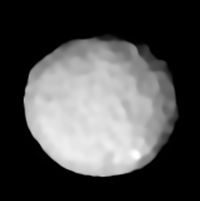
Photo from wikipedia
The variation of low-level inversion characteristics is one of the important factors for Arctic amplification. Radiosonde (RS) observations are one of the reliable tools to study Arctic inversions. However, they… Click to show full abstract
The variation of low-level inversion characteristics is one of the important factors for Arctic amplification. Radiosonde (RS) observations are one of the reliable tools to study Arctic inversions. However, they provide limited information on the spatial distribution of temperature inversions. The radio occultation (RO) technique can provide accurate, all-weather, high vertical resolution atmospheric parameter profiles over both land and ocean. In this paper, the RO technique is investigated to estimate the inversions, and their uncertainties are assessed via comparing with the RS inversions. Results show that the inversions (base, depth, and strength) from RS and RO observations are lower, deeper, and stronger in winter than in autumn, spring, and summer. Moreover, comparisons of spatiotemporally synchronized RO and RS inversions (i.e., Scheme I) during 2007–2013 reveal that the former are higher, deeper, and weaker than the latter. Further comparisons of RS and $5 {^{\circ }} \times 5 {^{\circ }}$ gridded RO inversions (i.e., Scheme II) show smaller overall standard deviations than Scheme I, indicating that the gridded RO observations can better describe the large-scale spatial structure of temperature inversions. Furthermore, corrections of the observed remarkable systematic differences between RO and RS inversions in both the schemes are also made. The results show that the RO inversions can be well calibrated, and that greater improvements in RO inversions calibration are achieved in Scheme II than in Scheme I. Therefore, the RO technique could be a potential tool to study the Arctic low-level temperature inversions as well as improve our understanding of Arctic climate change.
Journal Title: IEEE Transactions on Geoscience and Remote Sensing
Year Published: 2017
Link to full text (if available)
Share on Social Media: Sign Up to like & get
recommendations!